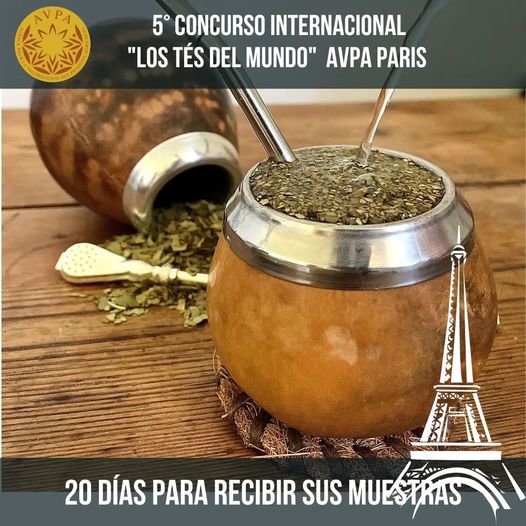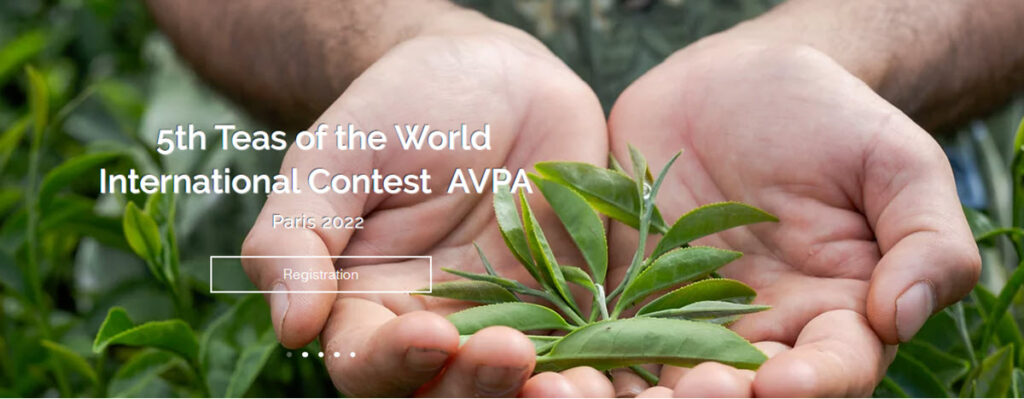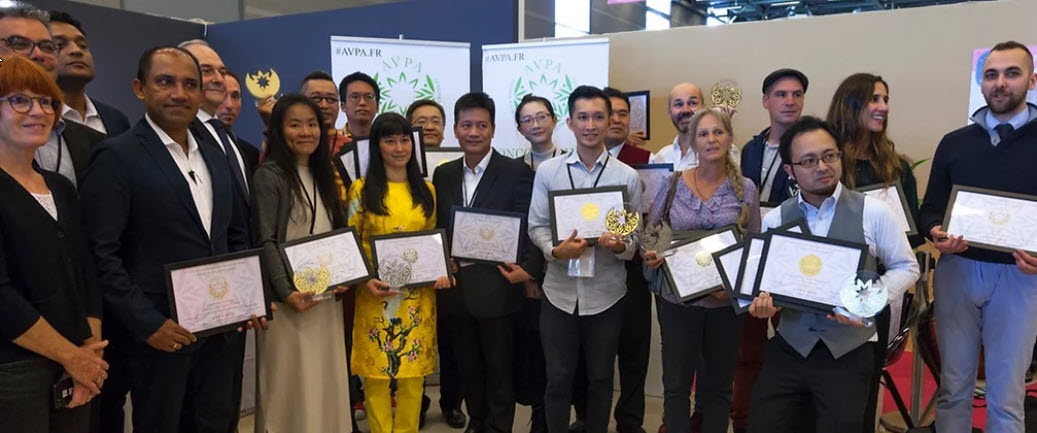AVPA’s annual tea competition offers more than a medal. During the past five years, AVPA has elevated the status of tea producers large and small, not only on the global stage but most importantly in their local markets. The deadline to enter the 5th Teas of the World International Contest is Aug. 1, 2022.
Caption: Ksenia Hleap manages AVPA communications and development
Entrants Receive Ongoing Support
Since its founding as a competition to showcase agricultural products, AVPA has expanded its services to include tasting workshops, technical support, and staff training for distributors.

Kesnia Hleap manages communication and development for Paris-based AVPA (Agency for the Valorization of Agricultural Product) a non-governmental, non-profit organization that judges edible oils, chocolate, coffee roasted at origin, and teas. Beyond the great classical origins (China, Japan, India, Sri Lanka …) the tea competition encourages consumers to discover new producers in Africa, Latin America, Southeast Asia and even Europe. A veteran marketer, Ksenia discusses the many benefits of participation.
Dan Bolton: Welcome to the Tea Biz podcast. How does AVPA, and specifically its Teas of the World Contest, benefit the tea industry?
Ksenia Hleap: AVPA exists now for 20 years. We created this contest to help the producers since the very first year. This will be our fifth edition of the tea contest. We have teas from all over the world, not only monovarietal teas [Camellia sinensis] but also herbal teas, infusions, and blends. AVPA enables producers to compete with the best from different countries and to obtain feedback from a very professional French-speaking jury. So, each time they enter and for every tea entered, producers have access to comparative jury scores and feedback. If they win the medal or not, they will have this possibility.
Dan: AVPA seeks to elevate awareness of tea producers globally, not just in France although French gastronomy is the framework by which judgments are made. Will you talk a little bit about AVPA’s recent initiatives such as the effort to increase participation by African producers and efforts to draw attention to European tea producers?
Ksenia: The contest is to inform the producer that we exist and to help recognize their work done. With the AVPA medal, producers receive recognition from an international organization that confirms the excellence of their products and reassures their standing in the competitive environment.
What we are doing after the contest for the producers, if they need our help, is to do help with marketing or strategy decisions. Our jury members are international consultants in the tea industry, tea experts. They can help the producers in Africa or Latin American countries for sure. We are always in touch, we are trying to be in touch with the cooperatives or tea associations in these countries. We explain why it is important to help the producers from PROM Peru for example and the Rooibos Council in South Africa.
The association helps not only tea producers but also coffee and chocolate producers to send the samples for the competition and after the competition to find the distributors.
The medal not only opens new markets – most important, it’s recognition of the producer’s efforts in the local market. It’s recognition for work well done.
Dan: AVPA then provides marketing support to contestants long after the awards ceremony?
Ksenia: AVPA support doesn’t end with the award ceremony. Once the contest ends, the producers are free to reproduce the medal on their packaging. But unfortunately, not every producer understands why they need to do this. So, we have some videos to explain. We scheduled zoom meetings with the winners after the contest and other resources describe at this link “How to use the Medal.”
I am an experienced marketer so I explain to the producers how they can use their medal not only on the packaging but in their communication strategy which is very important. Here is a helpful video on How to Use AVPA Medals.
Medals are a fantastic commercial instrument. For example, if producers need to apply for credit at the bank to buy new machines or funds to finance an expansion, it is very, very helpful to explain that they have a diploma and are recognized in Paris by an international tea contest. It is a reassurance to clientele during ongoing negotiations. It supports support favorable decision-making and improves the producer’s prospects.
Dan: You must love tea; will you share your preferences?
Ksenia: I love tea. Frankly, I prefer different herbal teas because, in my childhood, I used to drink a lot of herbal teas, but now with five years of experience at AVPA my passion is to taste the different teas from different countries. To find out new origins and tastes. I’m always looking for something very original, authentic.
Contest winners are announced in October. Winning brands receive a diploma and may display the award on their packaging.
Agency for the Valorization of Agricultural Products
- Download 2022 Entry Form (Camellia Sinensis)
- Download 2022 Entry Form (Herbal Infusions, Blends and Flavored Teas)
Submit entry form at [email protected]
Samples are due in Paris August 1
Questions? [email protected]
2021 Winners (Camellia Sinensis)
2021 Winners (Herbal Infusions)
Monovarietal teas are evaluated by a jury chaired by Carine Baudry an expert in sensory analysis and founder of Quintessence.
How AVPA Elevates Origins
Recognition, professional education programs, and contests build self-esteem and economic success that directs a larger share of the value chain to the country of origin. “This is why we cling to local transformation of agricultural products so that producers benefit from the pursuit of excellence,” says AVPA President Philippe Juglar. Read more…

Competition Tea
Tea competitions that “speak” for their respective markets are great for the industry. In the tea lands, skilled growers and tea makers can infinitely adjust their pluck, style, grade, and sort for export – but first, they must understand market preferences. In France AVPA judges companies from around the world for excellence “based on gastronomic rather than standardized refereeing.”
Read more…
Share this post with your colleagues.
Signup and receive Tea Biz weekly in your inbox.

Never miss an episode
Subscribe wherever you enjoy podcasts:


